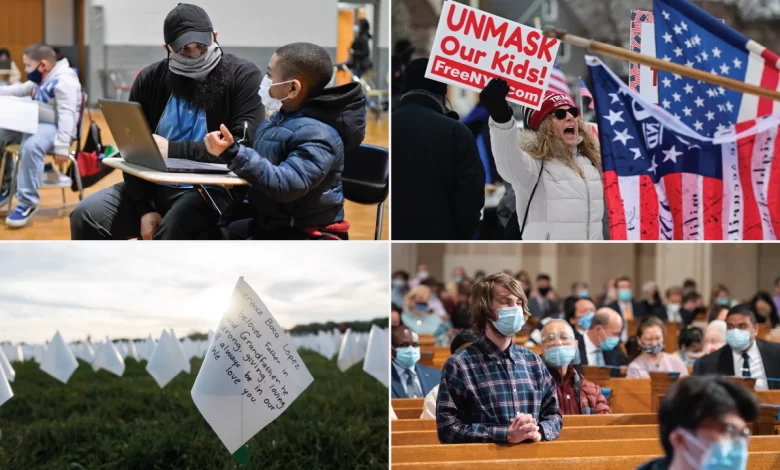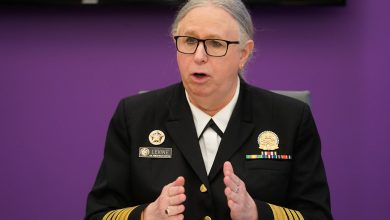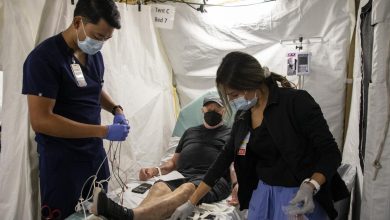The 5 U.S. States Hit Hardest by Rising COVID-19 Risk Levels

Just when many Americans had begun to believe the COVID-19 crisis was behind them, new warning signs have emerged. In 2025, the United States is once again witnessing rising COVID-19 risk levels—but this time, the spread is uneven. Certain states are seeing far greater surges, placing immense pressure on hospitals, communities, and families.
While some regions continue life with little disruption, five states stand out as being hit the hardest. Their experience highlights not only the ongoing threat of COVID-19, but also the unique ways geography, politics, healthcare infrastructure, and demographics shape public health outcomes.
COVID-19 in 2025: Where We Stand
By 2025, much has changed since the pandemic’s early days:
- Vaccines and boosters are widely available.
- Treatments for severe cases are far more effective.
- Many Americans carry some natural immunity from past infections.
Yet, COVID-19 has not disappeared. Instead, it has become cyclical—rising and falling like the flu. New variants continue to emerge, some more transmissible or immune-evasive than others.
The CDC has reintroduced a risk-level system to track severity across states, combining infection rates, hospitalizations, and test positivity. And in this system, five states consistently rank at the top for “high risk.”
The 5 Hardest-Hit States
1. Florida: The Sunshine State in the Shadows
Florida has been at the center of the COVID-19 storm since the very beginning, and 2025 is no different. With its large elderly population, booming tourism industry, and political battles over mandates, Florida continues to struggle.
Why Florida?
- Over 21% of residents are over 65, making it the oldest state demographically.
- Millions of visitors flow in and out of Orlando, Miami, and Tampa every month, fueling transmission.
- The state has resisted new mask or vaccine mandates, leaving protection largely up to individuals.
Hospitals in Miami-Dade and Palm Beach counties have reported ICU bed shortages, and nursing homes are once again becoming hotspots.
A retired teacher in Sarasota put it bluntly:
“We’ve been through this before, but it feels like we never learned the lesson. It’s déjà vu.”
2. Texas: Big State, Big Challenges
The saying goes that everything is bigger in Texas—and sadly, that includes COVID-19 surges.
Why Texas?
- Vast geography with major urban hubs (Houston, Dallas, Austin) and sprawling rural areas.
- Rural hospitals are overwhelmed, lacking staffing and ventilators.
- Vaccine uptake has lagged behind national averages.
- The oil and gas economy brings in international workers, raising exposure risk.
This mix creates a two-tier crisis: packed emergency rooms in cities, and limited healthcare access in rural towns.
Doctors in Houston describe working double shifts to keep up. One nurse said:
“It feels like 2020 again, except people are more tired and less willing to listen.”
3. California: Diversity Meets Density
California, America’s most populous state, is once again grappling with high COVID-19 risk levels.
Why California?
- With 40 million residents, even a small rise in cases translates into large numbers.
- Major metro areas—Los Angeles, San Francisco, San Diego—are densely populated.
- California is a hub for international travel, especially from Asia and Latin America.
- Homelessness and housing crises create clusters where outbreaks spread quickly.
Despite some of the strictest safety protocols early in the pandemic, California’s size and diversity make it uniquely vulnerable.
Hospitals in Los Angeles report not only high admissions, but also staff burnout. Meanwhile, rural areas like the Central Valley face shortages of doctors, highlighting the state’s healthcare inequality.
4. New York: The Pandemic’s First Epicenter Rises Again
New York was once ground zero for COVID-19 in the United States, and while much has improved, the state remains on high alert.
Why New York?
- Dense urban living in New York City makes distancing nearly impossible.
- A constant influx of international travelers through JFK and LaGuardia airports.
- High housing density means multi-generational families are at risk.
- Seasonal shifts: winter drives people indoors, where transmission is easier.
In Queens, hospitals are reporting a surge in pediatric admissions, especially among children too young to have completed booster schedules.
One doctor at Mount Sinai Hospital said:
“We know how to manage this better now, but the sheer numbers are exhausting.”
5. Arizona: Heat, Health, and Hardships
Arizona might surprise some on this list, but its rising COVID-19 risk levels have drawn national attention.
Why Arizona?
- A large elderly population, particularly in retirement communities like Scottsdale and Sun City.
- High rates of chronic conditions such as obesity and diabetes, which raise COVID-19 complications.
- Migrant populations and cross-border movement contribute to spread.
- Rural hospitals face severe staffing shortages.
Compounding the issue, Arizona faces extreme heat waves that push vulnerable populations indoors into air-conditioned spaces, where the virus circulates more easily.
A Phoenix resident described the double burden:
“Between the heat and the virus, it feels like we’re trapped inside. It’s a constant struggle.”
Key Factors Behind the Surges
When examining why these states are hit hardest, several themes emerge:
- Demographics: Older populations are at higher risk.
- Healthcare Infrastructure: Rural hospitals and understaffed facilities worsen crises.
- Politics & Policy: States that resisted mandates often see higher spread.
- Geography & Travel: Tourist hubs and international gateways are especially vulnerable.
- Economic Pressures: Essential workers often can’t afford to stay home, driving exposure.
The Human Toll
Behind the statistics are millions of personal stories:
- Parents juggling sick kids and work.
- Elderly couples facing isolation once again.
- Nurses on the verge of burnout.
- Businesses struggling to stay afloat as employees call in sick.
COVID-19 isn’t just a medical crisis. It’s an economic, emotional, and social one.
Lessons for the Rest of the Country
The five hardest-hit states provide lessons that all Americans can learn from:
- Stay Flexible: Policies should adapt quickly to changing conditions.
- Protect the Vulnerable: Prioritize seniors and high-risk groups for boosters.
- Strengthen Rural Healthcare: Invest in hospitals and staffing in underserved areas.
- Communicate Clearly: Mixed messages erode trust and compliance.
- Balance Freedom and Responsibility: Public health works best when individuals and governments cooperate.
Looking Ahead: What Comes Next?
Experts warn that COVID-19 may never fully vanish. Instead, it will ebb and flow, much like the flu—but with potentially greater consequences.
- Annual or biannual booster campaigns may become the norm.
- Surveillance of new variants will remain crucial.
- States must prepare for seasonal surges with stockpiled resources.
- Mental health support for frontline workers must become a priority.
The five hardest-hit states are, in many ways, a glimpse of America’s future: navigating a world where COVID-19 is here to stay, but how we manage it makes all the difference.
Related Article: US COVID-19 activity rising steadily
Conclusion
The rise in COVID-19 risk levels in 2025 serves as a reminder that the pandemic’s story is far from over. Florida, Texas, California, New York, and Arizona—each with its unique challenges—stand at the center of this new chapter.
Their struggles are not just about infection rates or hospital beds; they are about how a society balances health, freedom, responsibility, and compassion.
If America listens closely, the experiences of these five states can light the path forward: one of resilience, adaptation, and ultimately, a renewed commitment to public health.
Because as history has shown us time and again, pandemics don’t just test our immune systems—they test our values, our communities, and our willingness to protect one another.




